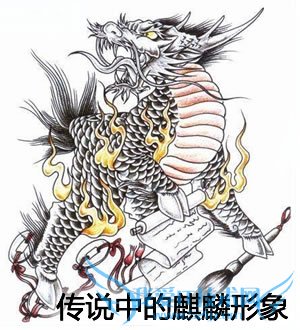��ӭ������52ijӢ��������������С��Ϊ�������Ӣ��֪ʶ�ǣ������������롱ʮ�����״���������(˫��)������������ϸ�ķ�����
���������롱ʮ�����״���������(˫��)

One of the world's rarest animals, the saola, known as the ''Asian unicorn'', has been sighted for the first time in more than a decade. However the animal died after been captured by villagers in a remote region of Laos.��ǰ������һƫԶ�����Ĵ���ס��һͷ��������������������ϡ�Ķ���֮һ���˳ơ��������ޡ�(Ҳ�������������롱)������ʮ�������������״η������ǵ��ټ�����������ͷ�����ڱ�ס֮�þ���ȥ�ˡ�
The critically endangered mammal, which is found in the mountains of Vietnam and Laos, was first discovered in 1992. The saola, which looks similar to the antelopes of North Africa, but is more closely related to wild cattle, is so elusive it has been likened to the unicorn, despite having two horns, the International Union for Conservation of Nature (IUCN) said.���ֱ�Σ���鶯��������1992����Խ�Ϻ����ε�ɽ���״η��ֵġ�������Ȼ��������(IUCN)�Ĺ�����Ա˵��������Ȼ����������ȴ��Ұţ�Ľ��ף������ٲ���������������˱������������ޡ�����������ʵ����ֻ�ǡ�

The animal is listed as critically endangered, with just a few hundred thought to exist in the wild. Conservationists said that with none in zoos and almost nothing known about how to keep them in captivity, if the species vanish in the wild they will be extinct.���ֶ��ﱻ�����ˡ����ȱ�Σ���֡���������Ҳ����˵ֻ�м���ͷ����������Ұ�⡣���ﱣ����˵��������û�����ֶ������Ҳ������֪������������ǣ�һ��������Ұ����ʧ��������־�����ˡ�
The Laos government said villagers in the country's central province of Bolikhamxay captured the saola in late August and brought it back to their village. When news of the capture reached the authorities a team was sent, advised by the IUCN and Wildlife Conservation Society (WCS), to examine and release the animal.���������ƣ������в���������ʡ�Ĵ����ڰ��µ�ס����ͷ�������������ش��ӡ���Ϣ�������ڹ�����Ȼ�������˺�Ұ�����ﱣ��Э��(WCS)�Ľ����£��йص����ɳ���һ֧���飬��ͼ��鲢�ͷ���ͷ������
Unfortunately the adult male saola was weakened by several days in captivity and died shortly after the team reached the remote village. It was photographed while still alive.���ҵ��ǣ������������������������������������ͷ�������������ڿ���ӵ���֮�þ���ȥ�ˣ������ֻ���ü�������ȥǰ������һ����Ƭ��
IUCN saola working group coordinator William Robichaud said: ''We hope the information gained from the incident can be used to ensure that this is not the last Saola anyone has a chance to see.''IUCN�����������Э����William Robichaud˵��������ϣ��������¼��еõ�����Ϣ�ܹ������ڱ���������ȷ����ͷ��ȥ�������������ǿ��ܼ��������һͷ����
And Dr Pierre Comizzoli, a member of the IUCN saola working group, said: ''Our lack of knowledge of saola biology is a major constraint to efforts to conserve it. It's clear that further awareness-raising efforts about the special status of saola are needed but the saola doesn't have much time left. At best a few hundred survive, but it may be only a few dozen. The situation is critical.''��һλ������ԱPierre Comizzoli˵��������������������ϰ��������Ƕ���ȱ����ʶ��������Ҫ�����Ƕ�������ֵ������λ�и�����˽⣬�������ǵȲ��˶���ˡ�Ұ�����м���ͷ��������Ҳ����ֻ�м�ʮͷ������Ѿ��dz�Σ������
- �����б����������۽������ѱ�����˿���������������վͬ����۵��֤ʵ��������
-
